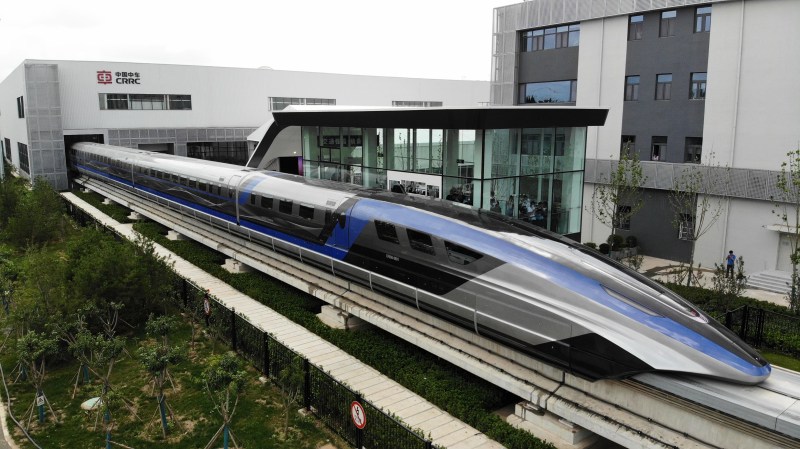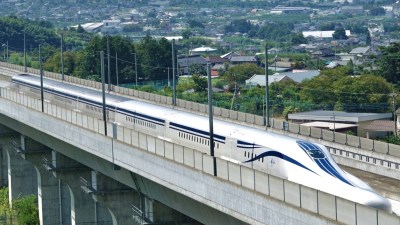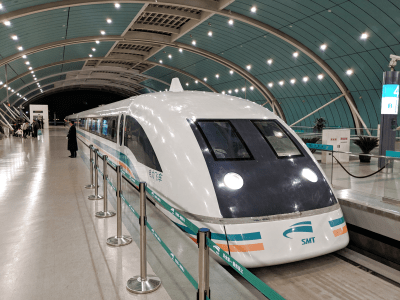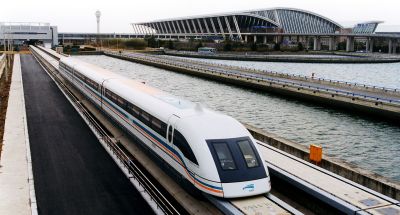
Maglev trains have long been touted as the new dawn for train technology. Despite keen and eager interest in the mid-20th century, development has been slow, and only limited commercial operations have ever seen service. One of the most well-known examples is the Shanghai Maglev Train which connects the airport to the greater city area. The system was purchased as a turnkey installation from Germany, operates over a distance of just 30.5 km, and according to Civil Engineering magazine cost $1.2 billion to build in 2001. Ever since, it’s served as a shining example of maglev technology — and a reminder of difficult and expensive maglev can be.
However, China has fallen in love with high-speed rail transport in the last few decades and has invested heavily. With an aggressive regime of pursuing technology transfers from foreign firms while building out the world’s largest high-speed rail network, the country has made great progress. Now, Chinese rail transit manufacturer, CRRC Corporation, have demonstrated their newest maglev train, which hopes to be the fastest in the world.
It’s Gonna Be Quick

600km/h is devastatingly fast, and is roughly equal to the current speed record held by the Japanese L0 Series maglev prototype, which achieved 603 km/h on a test track in 2015. The L0 Series holds the current record, and is intended to operate at a speed of 500 km/h in service on the Tokyo-Nagoya line, due to open in 2027.

China’s new maglev design, known as the CRRC 600, was first publicised back in 2019. Expected to enter service in 5 to 10 years, it’s a further development of the technology used in the existing Shangai airport link. That train was a turnkey operation bought from German company Transrapid, which has been developing maglev train technology for decades. Our own Mike Szczys travelled on that very system in 2019, which reaches speeds of up to 430km/h in peak hour. CRRC has continued to develop the technology under licence from the owners of Transrapid, Thyssen-Krupp. There has also been discussion of the Chinese operation reopening the original Transrapid test track in Emsland, Germany, which was shut down five years after a fatal accident in 2006.
The Technology

The Business Case

The problem is, merely looking at the face value build cost is a poor analysis technique when it comes to transportation systems. Something often forgotten is that a train that travels twice as fast can, theoretically, carry twice as many passengers in the same amount of time. Turnarounds and efficiencies never scale perfectly, but that value must be taken into account. Additionally, dealing with things like steep grades and property acquisition can wildly skew costs from one project, or even one section of track, to another. Other potential bonuses of maglev technology involve lower maintenance costs, due to the non-contact operation of the railway reducing wear. Indeed, in the case of South Korea’s low-speed Incheon maglev railway, the authorities involved claimed the system was significantly cheaper overall than a traditional railway.
Next-Gen Ground Transport Trying to Break Through
Concerns of cost and profitability have kept high speed rail, let alone maglev, from gaining a foothold in places like the US and Australia, despite the potential gains from linking distant cities with something less fussy and more efficient than air travel. Maglev has also vanished from Europe despite Britain and Germany being early pioneers of the technology.
However, China, which is less bothered by such short-sighted concerns, is able to forge ahead with its nation-building project. Lines from Shanghai to Hangzhou and Guangzhou-Shenzhen are likely to be the next candidates to receive maglev lines. These could be amongst the first intercity maglev lines in the world along with the Japanese efforts, and will serve as an important bellwether as for the viability of the technology going forward. If early steps prove successful, expect maglev railways to stretch across China in record time, in much the same vein as high speed rail in the last two decades.
0 Commentaires